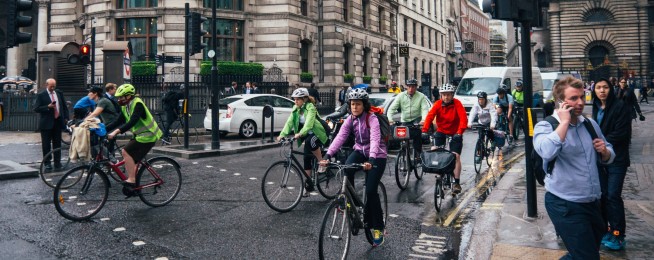There is overwhelming evidence that bike riding is a sure way to get and stay healthy, and those who ride to work are among the few getting healthier in a population that overall is getting chronically sicker.
People who get enough medium to strenuous exercise are healthier and happier by every measure.
And most people could be getting that exercise simply by riding to work or riding to the station.
The problem is that we have designed—and heavily subsided—a transport system that is increasing chronic disease by inducing people to become sedentary car users.
The solution is to rethink transport as a health delivery system—one that prioritises and encourages active travel.
A new report from the UK’s Health Foundation gives a great summary of the issue.
"A good transport system is essential for a healthy society,” the report says.
"The impact of air pollution on health is well-known, but transport affects the health of people across society, in multiple ways. Investing in transport is one way we can help address widening health inequalities and regional disparities in public health.
"The quality of the transport infrastructure and the adequacy of transport services directly affect health by, for example, enabling active modes of travel (such as walking and cycling) that have health benefits or reducing road accidents and harmful emissions.
"But wider, indirect impacts on health include enabling people to get to work, school, hospital and fresh food shops, as well as social events and leisure activities – aspects of life that are important for good physical and mental health.”
The report sets out:
- How transport affects health
- The consequences of a car-dependent transport system
- The difficulties in shifting towards greater use of public transport
- An overview of transport policy
- The effects of COVID-19 on travel patterns.
The report says there have been huge changes to how people in the UK travel over the last 70 years.
The average annual distance people in Britain travel is now three times as far as it was in 1952, largely due to a tenfold increase in the distance travelled by car.
"Our analysis suggests that increasing walking and cycling in all regions of England to that of regions with the furthest distance walked or cycled could prevent 1,189 deaths per year,” the report says.
"If exercise levels increased each week by a combined 30 minutes of cycling and 30 minutes of walking, there would be an annual reduction of around 6,100 deaths.
"Cars offer great convenience and mobility but can also reduce the mobility of others – by marginalising some road users and discouraging walking and/or cycling because of the way the built environment is designed to favour cars.
"The right planning approach can encourage a shift towards a wider range of transport options that can help support a healthier and more environmentally sustainable transport system.”
The report concludes that it is essential that the government incorporates the following priorities into its planning:
- Greater coordination of new infrastructure projects with transport policies, to reduce car dependency and improve community connectedness.
- Increased safe cycling and walking facilities (such as segregated cycle lanes and secure bicycle parking facilities).
- Supporting public transport reliability by introducing traffic management measures such as priority bus routes.
- Increasing the availability, reliability and affordability of public transport services to improve wellbeing and shift travel behaviour away from cars.
You can read the full report here.
Become our friend
Find out more about Bicycle Network and support us in making it easier for people to ride bikes.


